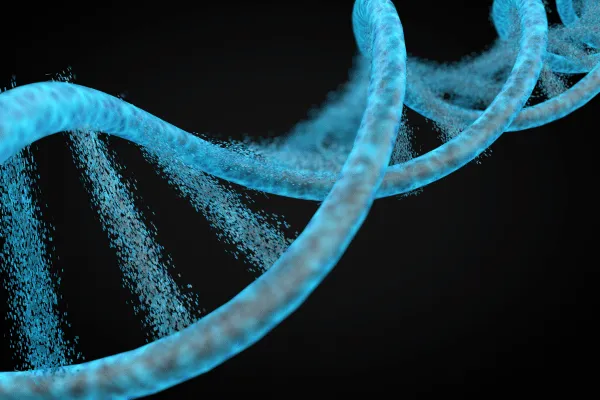Your Guide to Understanding Psoriatic Arthritis
Psoriatic arthritis (PsA) is a condition where our body's immune system mistakenly targets healthy cells, often appearing alongside psoriasis. Beyond skin symptoms, it can impact our joints, internal organs, and even our eyes. It's worth noting that its signs can resemble other conditions, so pinpointing a diagnosis can be a bit of a puzzle.
Navigating life with PsA is a unique journey for everyone. Whether you're new to the diagnosis or have been managing it for some time, having the right information and support is invaluable. Dive into our site for insights on PsA, from understanding the diagnosis to exploring treatments. Alongside, discover tips for daily management, and avenues to advocate not just for yourself but for others too.

Understanding Placenta Derived Protein Array: What It Is and How It Works
Regenerative medicine is a groundbreaking field that focuses on repairing, replacing, or regenerating damaged tissues and organs in the body, often using the body's own cells. By harnessing the power of stem cells, proteins, and other biological materials, regenerative medicine aims to restore function and improve outcomes for patients with various conditions. Its importance in modern healthcare is rapidly growing, as it offers innovative solutions for conditions that were previously difficult or impossible to treat, paving the way for more effective and personalized medical care.
What is Placenta Derived Protein Array (PDPA)?
Placenta Derived Protein Array (PDPA) is a specialized collection of proteins obtained from placental tissue, designed to promote cell growth, repair, and regeneration. These proteins have the unique ability to differentiate into various cell types, making PDPA a powerful tool in regenerative medicine for healing and tissue repair.
PDPA is a crucial advancement in regenerative medicine because it leverages the natural healing properties of placental proteins, which are rich in growth factors and have the ability to differentiate into multiple cell types. This versatility makes PDPA particularly effective in promoting tissue repair and regeneration across a wide range of medical applications, from wound healing to organ repair.
One of PDPA's unique properties is its ability to accelerate the body's natural healing processes without the need for invasive procedures. Unlike traditional treatments that may rely on surgery or long-term medication, PDPA harnesses the power of bioactive proteins to encourage the body’s own cells to regenerate damaged tissues. Additionally, PDPA’s origin from placental tissue, which is typically discarded after childbirth, provides a sustainable and ethical source for these regenerative proteins, setting it apart from other treatments that may have more limited or controversial sources.
How Does PDPA Work?
The biological processes involved in PDPA's function center around its rich array of bioactive proteins and growth factors, which play a critical role in cellular communication, repair, and regeneration.
1. Cellular Signaling and Activation:
When PDPA is introduced into the body, its proteins and growth factors bind to specific receptors on the surface of cells in the targeted tissue. This binding initiates a cascade of intracellular signals that activate the cells, prompting them to proliferate, migrate, and differentiate into the types of cells needed for repair and regeneration.
2. Tissue Repair and Regeneration:
PDPA’s proteins enhance the body’s natural healing processes by encouraging the formation of new blood vessels (angiogenesis), reducing inflammation, and promoting the production of extracellular matrix components like collagen. These processes are essential for the repair of damaged tissues, as they help to rebuild the structural framework of the tissue and restore its function.
3. Differentiation into Various Cell Types:
One of the key features of PDPA is its ability to drive the differentiation of stem cells into specific cell types, such as muscle cells, bone cells, or skin cells. This is particularly valuable in regenerative medicine, as it allows PDPA to be used in a wide range of applications, from repairing muscle damage to regenerating skin after a wound.
4. Integration and Healing:
Once the damaged tissue has been regenerated, the newly formed cells integrate with the existing tissue, restoring both its structure and function. PDPA’s bioactive components also help to regulate the immune response, ensuring that the healing process is smooth and reducing the risk of complications such as excessive scarring or chronic inflammation.
The Science Behind PDPA
PDPA (Placenta Derived Protein Array) promotes cell growth, repair, and regeneration through the action of its bioactive proteins and growth factors, which are crucial in orchestrating the body’s natural healing processes. Here’s how PDPA works at the cellular level:
1. Stimulation of Cell Growth:
The proteins within PDPA act as signaling molecules that communicate with cells in damaged tissues. When these proteins bind to specific receptors on the surface of cells, they activate signaling pathways that lead to cell proliferation. This means that PDPA encourages the division and multiplication of cells, which is essential for replacing lost or damaged cells in the affected tissue.
2. Enhancement of Cell Repair:
PDPA's growth factors play a critical role in repairing damaged tissues. These growth factors, such as transforming growth factor-beta (TGF-β) and vascular endothelial growth factor (VEGF), help modulate the body's inflammatory response and recruit essential cells like fibroblasts to the site of injury. Fibroblasts are key players in producing collagen and other extracellular matrix components, which are necessary for rebuilding the structural framework of tissues.
3. Promotion of Tissue Regeneration:
One of PDPA’s most significant contributions to regenerative medicine is its ability to promote tissue regeneration. The proteins in PDPA can signal stem cells to differentiate into specific cell types needed for repair, such as skin cells, bone cells, or muscle cells. This targeted regeneration helps restore the normal structure and function of tissues more effectively than traditional treatments.
The Role of Proteins and Growth Factors in PDPA:
Growth Factors: Growth factors like VEGF and TGF-β are integral to PDPA's effectiveness. VEGF, for instance, promotes angiogenesis, the formation of new blood vessels, which is crucial for supplying oxygen and nutrients to regenerating tissues. TGF-β helps regulate cell growth, differentiation, and immune responses, ensuring that tissue repair processes are balanced and efficient.
Cytokines: PDPA also contains cytokines, which are small proteins that influence the behavior of cells. Cytokines in PDPA can enhance cell migration to the injury site, support cell survival, and modulate the immune response to prevent excessive inflammation that could impede healing.
Extracellular Matrix (ECM) Components: PDPA includes proteins that are components of the extracellular matrix, such as collagen. These ECM proteins provide a scaffold that supports the structural integrity of tissues and aids in the proper organization of cells during the healing process.
What do you think the future holds for regenerative medicine with innovations like PDPA? How could these advancements change the way we approach treatment and recovery?
Have a question?
We're Here to Help
By providing my phone number, I agree to receive text messages from the business.

